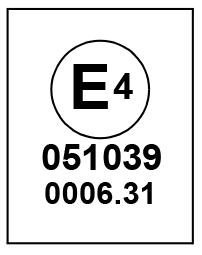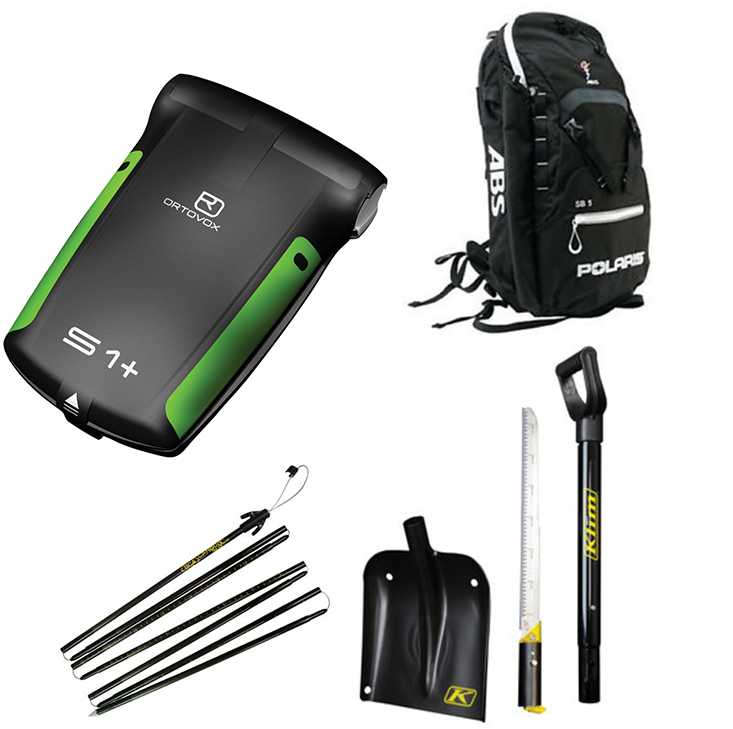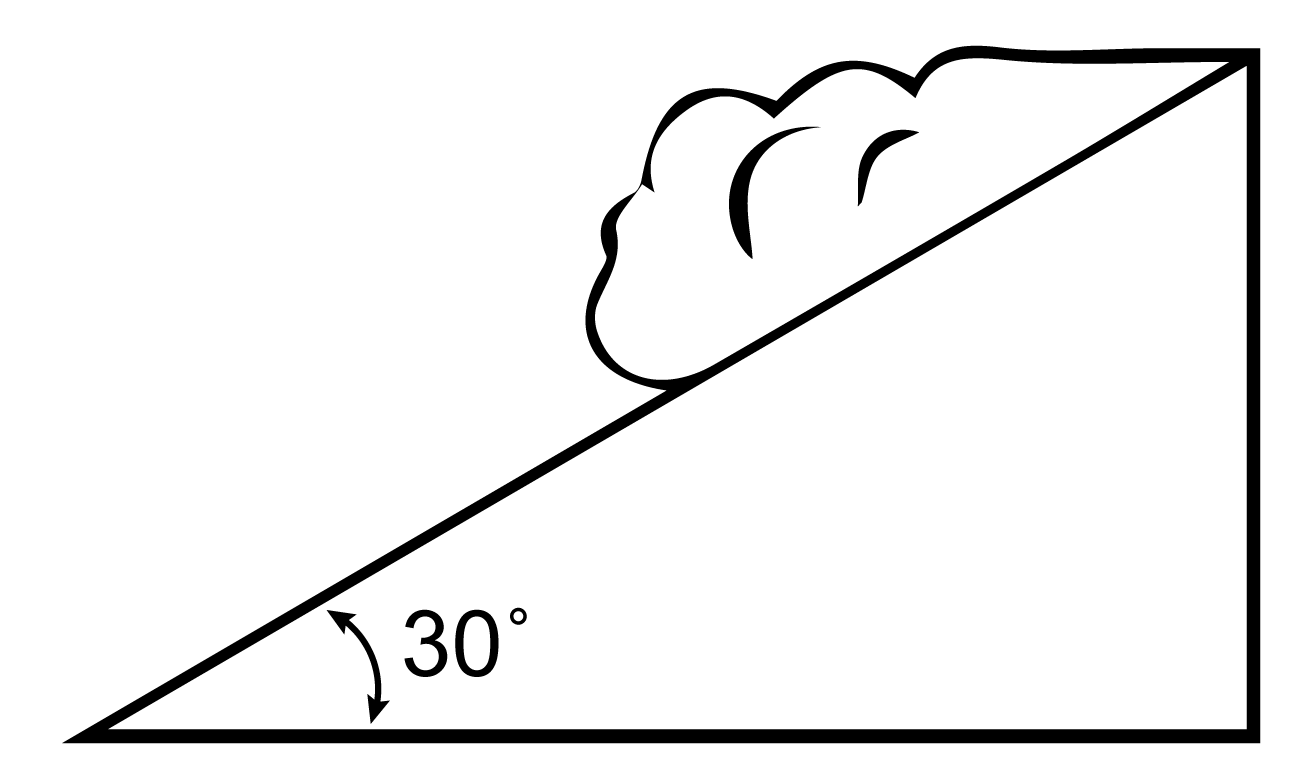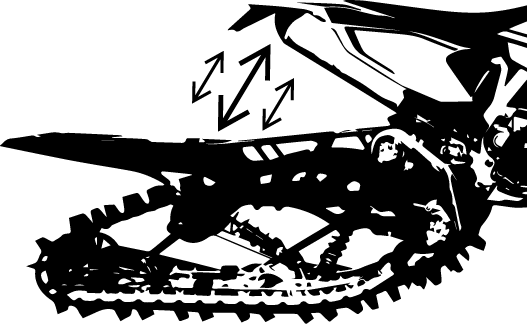
Content Source: 2019 Timbersled ST 120 RAW Owner’s Manual (9928985 R01) > Safety Chapter
| IMPORTANT |
|
The Owner's Manual for this vehicle contains warnings, instructions and other information you must read and fully understand before safely riding or performing maintenance on this vehicle.Always follow the warnings and instructions in Owner's Manual. Click the CONTENTS link above for the Table Of Contents, or download a full PDF of the Owner Manual in the Owner Support area of Polaris.com |
|
Driving a snow bike requires your full attention. DO
NOT drink alcohol or use drugs or medications before or while driving.
They will reduce your alertness
and slow your reaction time.
Snow bikes are capable of traveling at high speeds.
Use extra caution to ensure operator safety. Make sure your snow bike
is in excellent operating
condition at all times. Always check major and vital safety components
before every ride.
All Timbersled snow bikes are designed and tested to
provide safe operation when used as directed. Failure of critical
machine
components may result from
operation with any modifications, especially those that increase speed
or power. DO NOT MODIFY
YOUR MACHINE. The snow bike
may become aerodynamically unstable at speeds higher than those for
which it is designed. Loss
of control may occur at
higher speeds. Modifications may also create a safety hazard and lead
to bodily injury.
|
| Serious injuries may result if hands, feet, or clothing become entangled in the track. Be alert when riding, and remain properly seated to stay clear of the track. Never hold the snow bike up or stand behind it while warming up the track. A loose track or flying debris could cause serious injury or death. We recommend having your dealer perform all track service and alignment procedures. |
| Improper riding position may reduce control and could result in serious injury or death. Always ride in a position that allows for control of your vehicle. |
Approved helmets in the USA and Canada bear a U.S. Department of Transportation (DOT) label.

Approved helmets in Europe, Asia and Oceania bear the ECE 22.05 label. The ECE mark consists of a circle surrounding the letter E, followed by the distinguishing number of the country which has granted approval. The approval number and serial number will also be displayed on the label.

| Avoid wearing loose clothing or long scarves, which can become entangled in moving parts and cause serious injury. Always wear an approved helmet and eye protection. |
| High speed driving, especially at night, could result in serious injury or death. Always reduce speed when driving at night or in inclement weather. |
| An avalanche can occur at any time, in any conditions and on any slope. |

| NOTE |
| The 30º slope graphic is for illustration purposes only. The risk of an avalanche is always present in mountainous terrain, regardless of slope angle. |

Make a riding plan based on the current avalanche and weather forecast. It is important to remember that overnight weather conditions may have created unsafe riding terrain that was considered safe the day before. Visit www.avalanche.org or scan the QR code. Follow the page links to locate current avalanche reports and conditions for your area of operation.

Timbersled recommends you and all members of your riding group participate in an avalanche safety course. Visit www.avalanche.org/education or scan the QR code for education and training resources.

| Ice and snow build-up may interfere with the steering and braking of your snow bike, resulting in serious injury or death. Keep the snow bike free of snow and ice. |
| Never attempt an abrupt change of direction when operating on slippery surfaces. Proceed slowly and use extra caution. Driving on ice or hard-packed snow reduces steering and braking control, which may result in loss of control and serious injury or death. Slow down and use extra caution when operating on slippery surfaces. |
| NOTICE |
| Driving in too little snow will result in excessive wear and damage to the slide rail, track, ski, ski skags, and/or spindle. |
| Inadequate cooling and lubrication will lead to overheating of the slide rail and track, causing premature wear, damage and failure, which can result in serious injury. Reduce speeds and frequently drive into fresh snow to allow adequate cooling and polishing of the slide rail and track surfaces. Avoid operating for prolonged periods on ice, hard-packed surfaces or roads. |
| When driving on long downhill stretches, pump the brakes. Riding the brakes may cause the brake system to overheat, which may result in brake failure. Excessive or repetitive use of the brakes for high speed stops will also cause an overheated brake system. This condition may lead to a sudden loss of brakes and/or fire and may result in serious injury or death. |
| Climbing a hill or crossing the face of a slope may result in loss of balance and rollover, causing serious injury or death. Use caution and good judgement when driving in hilly terrain. |
| caution |
| Reference host bike’s owner’s manual to insure bike is adequately prepared for cold temperature conditions. |
| Wind Speed in MPH | Actual Thermometer Reading (°F) | |||||||||||||||||
| 40 | 35 | 30 | 25 | 20 | 15 | 10 | 5 | 0 | -5 | -10 | -15 | -20 | -25 | -30 | -35 | -40 | -45 | |
| Equivalent Temperature (°F) | ||||||||||||||||||
| Calm | 40 | 35 | 30 | 25 | 20 | 15 | 10 | 5 | 0 | -5 | -10 | -15 | -20 | -25 | -30 | -35 | -40 | -45 |
| 5 | 36 | 31 | 25 | 19 | 13 | 7 | 1 | -5 | -11 | -16 | -22 | -28 | -34 | -40 | -46 | -52 | -57 | -63 |
| 10 | 34 | 27 | 21 | 15 | 9 | 3 | -4 | -10 | -16 | -22 | -28 | -35 | -41 | -47 | -53 | -59 | -66 | -72 |
| 15 | 32 | 25 | 19 | 13 | 6 | 0 | -7 | -13 | -19 | -26 | -32 | -39 | -45 | -51 | -58 | -64 | -71 | -77 |
| 20 | 30 | 24 | 17 | 11 | 4 | -2 | -9 | -15 | -22 | -29 | -35 | -42 | -48 | -55 | -61 | -68 | -74 | -81 |
| 25 | 29 | 23 | 16 | 9 | 3 | -4 | -11 | -17 | -24 | -31 | -37 | -44 | -51 | -58 | -64 | -71 | -78 | -84 |
| 30 | 28 | 22 | 15 | 8 | 1 | -5 | -12 | -19 | -26 | -33 | -39 | -46 | -53 | -60 | -67 | -73 | -80 | -87 |
| 35 | 28 | 21 | 14 | 7 | 0 | -7 | -14 | -21 | -27 | -34 | -41 | -48 | -55 | -62 | -69 | -76 | -82 | -89 |
| 40 | 27 | 20 | 13 | 6 | -1 | -8 | -15 | -22 | -29 | -36 | -43 | -50 | -57 | -64 | -71 | -78 | -84 | -91 |
| 45 | 26 | 19 | 12 | 5 | -2 | -9 | -16 | -23 | -30 | -37 | -44 | -51 | -58 | -65 | -72 | -79 | -86 | -93 |
| 50 | 26 | 19 | 12 | 4 | -3 | -10 | -17 | -24 | -31 | -38 | -45 | -52 | -60 | -67 | -74 | -81 | -88 | -95 |
| 55 | 25 | 18 | 11 | 4 | -3 | -11 | -18 | -25 | -32 | -39 | -46 | -54 | -61 | -68 | -75 | -82 | -89 | -97 |
| 60 | 25 | 17 | 10 | 3 | -4 | -11 | -19 | -26 | -33 | -40 | -48 | -55 | -62 | -69 | -76 | -84 | -91 | -98 |
| Frostbite in >> | 30 min. | 10 min. | 5 min. | |||||||||||||||
| Wind Speed in Km/h | Actual Thermometer Reading (°C) | |||||||||||||||||
| 5 | 2 | -1 | -4 | -7 | -10 | -13 | -16 | -19 | -22 | -25 | -28 | -31 | -34 | -37 | -40 | -43 | -46 | |
| Equivalent Temperature (°C) | ||||||||||||||||||
| Calm | 5 | 2 | -1 | -4 | -7 | -10 | -13 | -16 | -19 | -22 | -25 | -28 | -31 | -34 | -37 | -40 | -43 | -46 |
| 8 | 3 | 0 | -4 | -7 | -11 | -14 | -18 | -22 | -25 | -29 | -32 | -36 | -39 | -43 | -46 | -50 | -53 | -57 |
| 16 | 2 | -2 | -6 | -10 | -13 | -17 | -21 | -24 | -28 | -32 | -36 | -39 | -43 | -47 | -50 | -54 | -58 | -62 |
| 24 | 1 | -3 | -7 | -11 | -15 | -19 | -22 | -26 | -30 | -34 | -38 | -42 | -45 | -49 | -53 | -57 | -61 | -65 |
| 32 | 0 | -4 | -8 | -12 | -16 | -20 | -24 | -28 | -32 | -36 | -39 | -43 | -47 | -51 | -55 | -59 | -63 | -67 |
| 40 | -1 | -5 | -9 | -13 | -17 | -21 | -25 | -29 | -33 | -37 | -41 | -45 | -49 | -53 | -57 | -61 | -65 | -69 |
| 48 | -1 | -5 | -9 | -13 | -18 | -22 | -26 | -30 | -34 | -38 | -42 | -46 | -50 | -54 | -58 | -62 | -66 | -70 |
| 56 | -2 | -6 | -10 | -14 | -18 | -22 | -26 | -31 | -35 | -39 | -43 | -47 | -51 | -55 | -59 | -64 | -68 | -72 |
| 64 | -2 | -6 | -10 | -15 | -19 | -23 | -27 | -31 | -35 | -40 | -44 | -48 | -52 | -56 | -61 | -65 | -69 | -73 |
| 72 | -2 | -7 | -11 | -15 | -19 | -23 | -28 | -32 | -36 | -40 | -45 | -49 | -53 | -57 | -61 | -66 | -70 | -74 |
| 80 | -3 | -7 | -11 | -15 | -20 | -24 | -28 | -33 | -37 | -41 | -45 | -50 | -54 | -58 | -62 | -67 | -71 | -75 |
| 88 | -3 | -7 | -12 | -16 | -20 | -24 | -29 | -33 | -37 | -42 | -46 | -50 | -55 | -59 | -63 | -67 | -72 | -76 |
| 96 | -3 | -8 | -12 | -16 | -21 | -25 | -29 | -34 | -38 | -42 | -47 | -51 | -55 | -60 | -64 | -68 | -73 | -77 |
| Frostbite in >> | 30 min. | 10 min. | 5 min. | |||||||||||||||
Suspension travel reduces distance between exhaust and tunnel. ALWAYS position cargo and accessories to avoid contact with engine, exhaust, or moving components.

© Copyright Polaris Industries Inc. All rights reserved.